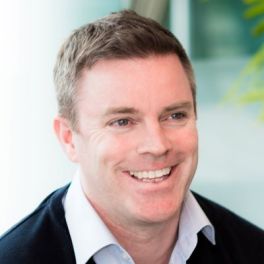News
Yemeni telecoms operators say they fear Houthis may destroy submarine cable infrastructure as part of the ongoing conflict
Vague threats from Houthi rebels have Yemeni telecoms operators fearing that local submarine cable infrastructure could be in jeopardy.
Late last year, a Houthi-linked Telegram channel published a map showing submarine network infrastructure in the Mediterranean Sea, the Red Sea, the Arabian Sea, and the Persian Gulf alongside a message that appeared to imply these cables could become targets for future aggression.
“There are maps of international cables connecting all regions of the world through the sea. It seems that Yemen is in a strategic location, as internet lines that connect entire continents — not only countries—pass near it,” read the post.
The Red Sea is a vitally important thoroughfare for international data traffic, allowing data to travel from Asia and Africa into the Mediterranean Sea and on to Europe via the Suez Canal. The Red Sea’s floor plays host to 16 submarine cables that reportedly carry around 17% of the world’s internet traffic, including crucial military communications for the surrounding region.
Perhaps the most important of these cables is the Asia-Africa-Europe (AAE-1) cable, which spans over 25,000km and connects Southeast Asia to Europe. Damage to the AAE-1 or accompanying cables could have major ramifications not only for the local economies that rely on them for connectivity but also for the international data community.
In recent months, this fact has become more pertinent with Yemeni Houthi rebels conducting a drone-led attack campaign against commercial shipping in the region in retaliation for the ongoing war in Gaza. This has led to major bombing campaigns in Yemen by Western powers, with the conflict expanding to include around a dozen countries.
But could this conflict realistically come to also encompass submarine cable infrastructure? The realities of such an attack seem unlikely. While the general location of submarine infrastructure is published by the community in order for maritime traffic to avoid damaging the cable, locating the cable accurately enough to attack it from the surface would be very difficult without precision equipment. Similarly, getting close enough to attack these cables without submersibles – particularly in an area constantly patrolled by various naval vessels – would be a risky business.
On the other hand, the part of the seabed where the cables pass near the Yemeni coast is notably shallow, reaching depths of only about 100m. While this would be of little help to the Houthis when it comes to locating the cables themselves, it does make the prospect of damaging these cables more feasible using conventional means; for example, using submersible explosives similar to the sea mines that the Houthi’s have deployed in the Red Sea for numerous years.
If a cable were to be damaged, the repair process would likely be arduous. There is only a very limited number of cable ships available internationally to perform the repairs, many of which would have to travel for days or even weeks to reach the location of the break. Couple this with the added complexity and security requirements of working on a cable in troubled waters like the Red Sea and cables could take months to repair.
For now, the Houthis’ veiled threats to submarine cable infrastructure seem to be little more than hot air, but they do highlight a growing appreciation for the critical role that submarine cable infrastructure plays in global economy – and the far-reaching impact disrupting these systems could have for the international community.
How are global conflicts impacting international data traffic? Join the submarine networks community in discussion at this year’s Submarine Networks EMEA conference
Also in the news:
EU telcos join forces against Gigabit Infrastructure Act
Jio releases ‘Jio Brain’ AI platform
Ofcom issues further crackdown on spoof phonecalls


















